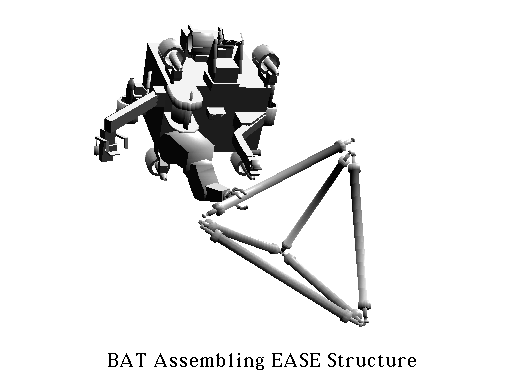Robotics
Author: Corde Lane
Operators of robotic systems use telepresence to help control the
telerobot when performing difficult tasks. A telerobot is a robotic
system controlled by a human operator at a remote control station.
The Space Shuttle RMS (Remote Manipulator System) is such a device.
An astronaut inside the Shuttle controls this arm in many tasks, such
as docking with a satellite, removing payload, etc.
Telepresence With Underwater Robots
At the University of Maryland's Space System Laboratory, water is used
to simulate the micro gravity of space. Studies look into using space
robotics to conduct space operations. Telepresence allows the
operator to become immersed in the robot's task. On the robot BAT
(Beam Assembly Teleoperator), two cameras are side by side on a
moveable platform. The two cameras transmit pictures, one
corresponding to each eye, to the control station. At the control
station, the operator then uses an HMD where the left eye monitor
shows the left camera's picture and the right eye monitor shows the
right camera's picture. The HMD also tracks the operator's head
movements, which moves the camera's platform in real time.
The operators can place their arm in a mechanical housing; this device
tracks the arm's position and orientation. The robotic arm can then
mimic the same orientation in real time. This creates a knowledge of
where the robotic arm is located at all times. This also helps make
the operator aware of their telepresence environment.
The partial immersion of the operator keeps them focused on the
difficult task that is being performed. The primary task of
assembling structures requires fine manipulation and precision in
positioning of components. BAT assembles a structure, consisting of
six beams and four cluster nodes. When assembled, a tetrahedron is
formed.

This routine assembly can be performed by space suited astronauts.
However by using a robot to complete these mundane tasks, the divers
are free to work in more intricate manipulation tasks.
Multimode Proximity Operations Device
Another vehicle, MPOD (Multimode Proximity Operations Device), uses
another form of stereo vision to provide depth cues when performing
docking and rendezvous operations. A pair of cameras is mounted to
the vehicle. There is no moveable platform so the cameras provide a
fixed frame of reference to the docking probe. The operator looks at
a monitor with a special pair of glasses. The screen alternately
flickers the left and right camera image. The glasses, which flicker
at the same time, block the right eye's vision when the left camera
view is on the monitor. The opposite occurs for the left eye;
therefore stereo vision provides the depth needed when attempting to
dock.
How To Get Involved
The best way to learn how robotics work is to actually design, debug
and work with them. This practical experience can be acquired when
taking design classes like Robotics.
References
Viggh, Herbert E.M., "Artificial Intelligence
Applications in Teleoperated Robotic Assembly of the EASE Space
Structure", Space Systems Laboratory, MIT, Cambridge, MA, 1988.
Shain, Eric B., "Design and Control of a Beam Assembly Teleoperator",
Space Systems Laboratory, MIT, Cambridge, MA, 1983.
![[Table of Contents]](/icons/button-contents.gif)
![[Next Chapter]](/icons/button-next.gif)
Human Interface Technology Laboratory

